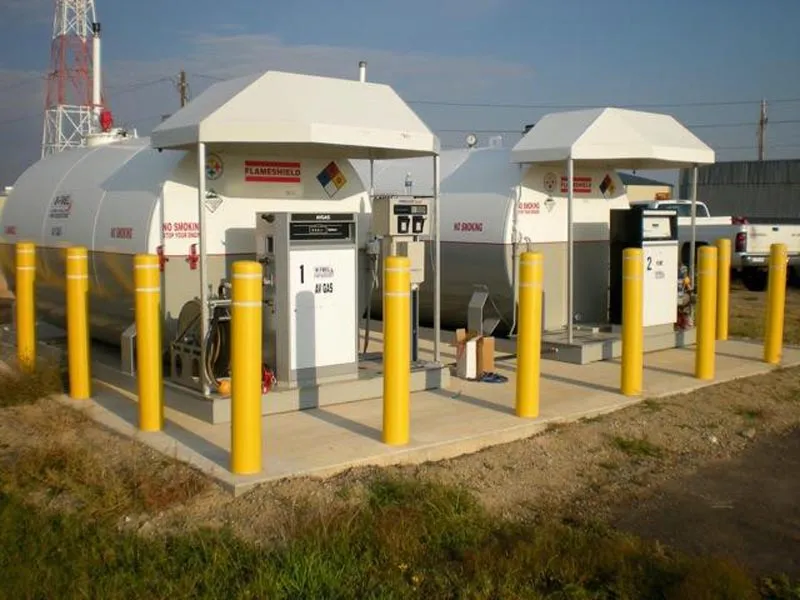

FAA Continues To Stall On G100UL
source link: https://www.avweb.com/insider/faa-continues-to-stall-on-g100ul/
Go to the source link to view the article. You can view the picture content, updated content and better typesetting reading experience. If the link is broken, please click the button below to view the snapshot at that time.
FAA Continues To Stall On G100UL
When last I worked myself into a virtual lather over the glacial non-progress of the stupidly over complicated process of finding an unleaded aviation fuel, I allowed as how I had grown old watching this process. I’m two months older now and still, nothing has happened.
At Sun ‘n Fun, George Braly told us he was assured by the FAA’s Earl Lawrence that STCs for General Aviation Modification Inc.’s G100UL would “almost certainly” be approved by early May. It’s early June and not only is Lawrence gone from his job overseeing certification at the FAA, he’s gone from the FAA. A new person, Lirio Liu, now has Lawrence’s old job, and evidently has to start over again with the final review. She has declined to respond to Braly’s request for either an update or a face-to-face meeting.
In the interim, I was asked by a reader why I thought the FAA was delaying this approval. First, recall that GAMI has been at this for 12 years and has completed, in detail, all the FAA-specified test parameters and is the only company to have done this, plus a long-term fleet durability test with Embry-Riddle. The Wichita certification office has reviewed the project ad nauseum and sent it on to Washington for the final approval. All boxes checked.
This has not happened. Why, asks the reader? We can only guess from the outside looking in. The FAA’s searingly incompetent showing in overseeing the Boeing 737 MAX certification may or may not be at play. The agency may be gun shy about making another high-profile certification blunder, although I’m not sure anything to do with piston fuel would rise above the fold in the New York Times.
One reason to believe the MAX fiasco is impacting the G100UL project is that in February of this year, the FAA announced expanded use of so-called Technical Advisory Boards to review downstream cert work by the FAA rank and file. It did this for the MAX and now it’s doing it for G100UL. OK, fair enough. Get the TAB assembled, do the review and announce findings.
But the applicant, in this case GAMI, should have a right to know who is on the TAB and what their credentials are. Braly told me the FAA has denied this information. Furthermore, the applicant should get a look at the report. The FAA has refused, claiming it’s in draft form. Anyone who has done a cert project or dealt with the government at the staff level will recognize this as death by a thousand cuts.
What seems likely to happen—and I’m predicting here based on bureaucratic behavior—is that the TAB will somehow find fault with the staff cert work and recommend that GAMI start over and go through the FAA’s new EAGLE program, or son of PAFI. The acronym means Eliminate Aviation Gasoline Lead Emissions, giving the impression that this time, we’re really serious. The FAA’s internal interest is less eliminating lead than suckering Congress into funding a multi-year, multi-million dollar program to make this problem last as long as possible. The alphabets and manufacturers go along with this in the interest of a cooperative relationship and, besides, it’s not their money. (It’s yours.)
And to be honest about it, they also understand—as do the avgas producers—that unleaded 100 octane will cost more than 100LL. So why rush into selling a more expensive fuel until you’re absolutely forced to?
The EPA has been in this loop, don’t forget, and is expected to issue a tetraethyl lead finding of endangerment before the end of the year. Braly told me EPA contacted him for technical details on G100UL and was apparently under the impression that little detonation or long-term durability testing had been done. In fact, hundreds of hours of such testing have been done, to the satisfaction of the FAA engineers who oversaw the testing. Don’t think for a moment that the agency isn’t capable of this kind of duplicity.
Everyone involved in this fuel cluster understands one thing: Even with the finding of endangerment, it will take EPA many months to do rulemaking, which plays into the FAA’s stretched out EAGLE program. “Loving the problem,” as former Lycoming manager Michael Kraft used to say with ill-disguised frustration. In my experience in covering this, Kraft was the only CEO who understood the process, the stakes and the risk if the single source of TEL dries up. However unlikely that is, don’t kid yourself into believing it couldn’t happen.
To me, that’s the largest risk here. Based on the EPA data I’ve seen so far, I was never convinced that lead emissions from aviation are a major environmental hazard. On the other hand, if the FAA would stop throwing sand in the gears, we could easily be on the way to getting rid of them.
You’ve seen our reporting on California authorities, having gotten a whiff of G100UL, want to ban leaded aviation fuel in the Golden State. It’s not clear if they can succeed at this, but it does represent a threat. Demand in Europe is another issue. If regulators there see G100UL—or any other fuel–as a viable replacement, then what happens?
Think about how pathetic we are if we are to believe it will take another eight years to figure this out. Why do we even continue to put up with this from our government agencies. It’s truly a puzzle.
Recommend
About Joyk
Aggregate valuable and interesting links.
Joyk means Joy of geeK
